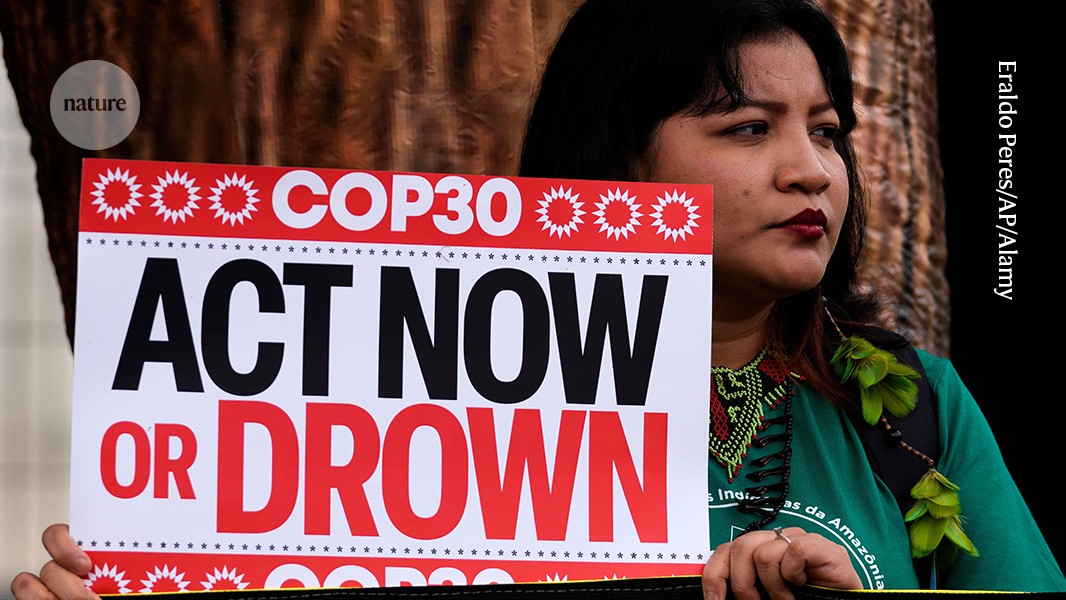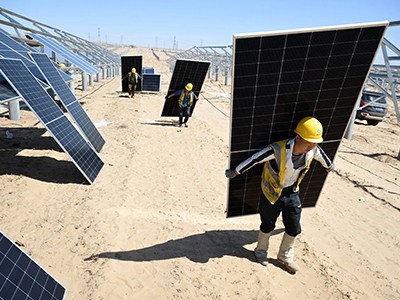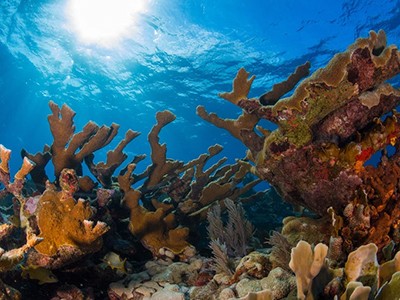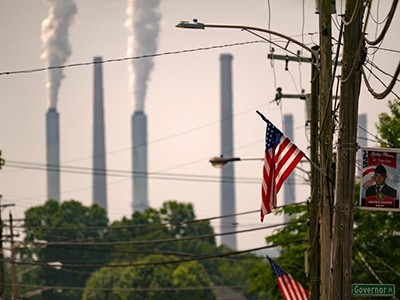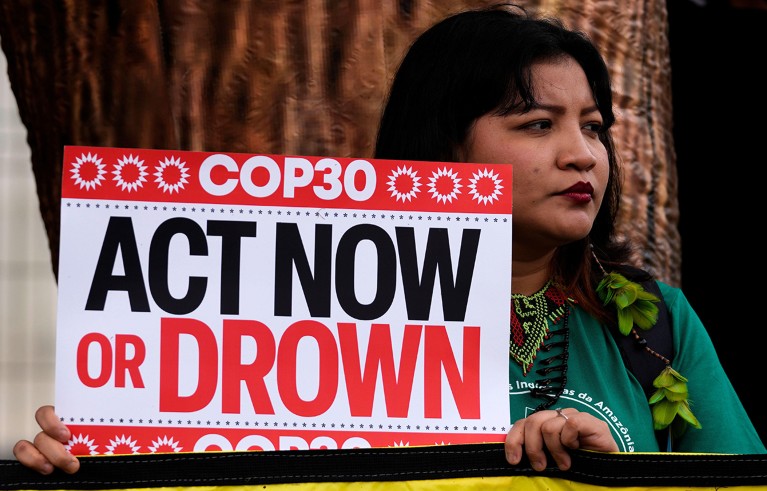
Climate activists are urging strong action from the delegates arriving at Belém for COP30.Credit: Eraldo Peres/AP/Alamy
It’s been ten years since Laurent Fabius, then the foreign minister of France, gavelled the United Nations 21st conference of the parties on climate change (COP21), bringing the 2015 Paris climate agreement into existence. It is an imperfect pact, not least because the initial commitments it enshrined were woefully inadequate. But it set an important goal: to avert planetary-scale ecological, economic and social disruptions by reining in greenhouse-gas emissions and limiting global warming to 2 °C — and, ideally, 1.5 °C — above preindustrial levels. To get there, countries agreed to an iterative pledge-and-review process that would, in theory, build confidence and trust alongside progress and momentum.
How to fight climate change without the US: a guide to global action
As representatives of governments convene in Belém, Brazil, for COP30, it is reasonable to question whether this process is delivering as promised. Globally, greenhouse-gas emissions have increased by 10% since 2015, hitting a new peak equivalent to the emission of some 53 billion tonnes of carbon dioxide last year.
Average global temperatures have also continued to increase, and the world is seeing the long-predicted impacts: more-extreme wildfires, storms, floods and droughts. Just last month, Derek Manzello, a researcher at the US National Oceanic and Atmospheric Administration, and his colleagues reported that an unprecedented marine heatwave in 2023 drove a pair of iconic corals that have served as primary reef builders off the coast of Florida for the past 10,000 years to “functional extinction” (D. P. Manzello et al. Science 390, 361–366; 2025). Researchers at Imperial College London estimate that global warming made Hurricane Melissa, the monster storm that rampaged through the Caribbean last month, four times more likely to occur.
Many countries are taking action, whether through mitigation measures, such as using more clean energy, or through financial investments to adapt and prepare for a changing climate. And there is little doubt, as our latest News Feature makes clear, that the engines of a low-carbon economy are revving up across the world — despite the anti-climate policies being put in place in the United States, the world’s largest economy and second-largest emitter, which has withdrawn from the Paris agreement.
The UN climate secretariat in Bonn, Germany, which monitors the state of national climate policies, is finding signs of progress: countries are creating stronger, more comprehensive climate action plans, called Nationally Determined Contributions (NDCs), than those drafted in 2020, the last time countries had to submit them. Three-quarters of the 64 plans analysed by the climate secretariat address adaptation and resilience (see go.nature.com/56hj7). Roughly 90% of the submitted plans laid out comprehensive, economy-wide emissions goals.
Warning signals
But the UN report also rang alarm bells, warning that commitments are still too few and too weak to achieve the Paris goals. This remains true even when considering targets that have been announced — but not formally submitted as NDCs — by two of the world’s largest emitters: China and the European Union.
These iconic corals are nearly extinct due to heatwaves: can they be saved?
Tallying everything up, the formal commitments and announced targets would curb emissions by around 10% of 2019 levels by 2035, according to the UN climate report. That is far short of the roughly 60% reductions needed to keep the world on a viable path to limiting warming to 1.5 °C this century. And of course, just setting a target does not mean that a country will meet it.
Other issues needing attention include climate finance. Under the Paris climate accord, low- and middle-income countries agreed for the first time to be subject to the same legally binding agreement as richer countries, which would lead the way and then help out with monetary and technical assistance in both mitigation and adaptation.
Lower-income countries are doing their part, making commitments and drafting detailed sustainable development plans — but the long-promised flow of climate finance has been sorely deficient. Although the Organisation for Economic Co-operation and Development estimates that private and public finance combined now exceed US$100 billion, countries have already set a new goal of mobilizing $300 billion annually by 2035, with an aspirational goal of $1.3 trillion. The next question is how to get there, and that will be a major item on the agenda in Belém.
Increasingly, delegates and observers are questioning whether climate COPs — which now attract more than 50,000 people, often to attend separate climate-related events happening at the same time as the COP — are the right venue to accelerate climate action. Around the corridors of COP30, there will be talk of reform — with UN finances under pressure, one idea is to fold the body that organizes climate COPs inside the UN Environment agency (UNEP) to help cut costs.
Climate impacts are real — denying this is self-defeating
The merits of this and other proposals are for another day. For now, the reality is that a COP is the only space in which representatives around the world can and must hash out complex climate issues, says Ani Dasgupta, president of the World Resources Institute, an environmental research and policy think tank based in Washington DC. Indeed, if reformers were to scrap the entire process and start over, Dasgupta says, they would almost certainly create something that looks a lot like the current COP process.
More than anything else, a strong signal that the governments will stay the course, despite increasing political headwinds, is needed at COP30. The message from scientists is clear: everybody needs to act, and quickly. Governments must find ways to strengthen their commitments and follow through with the hard work to make them real.
COP30 has been dubbed the ‘implementation COP’ for good reason. The rules and framework of the agreement have been worked out. Mechanisms and facilities have been established to handle everything from climate finance and adaptation to market-based mechanisms and damages from the inevitable impacts of global warming, known as loss and damage. Now it’s about following through. Everyone at COP21 in Paris knew their commitments fell well short of what was needed — but the Paris agreement represented a promise to do more, faster and better, in the future. Once again, and as always, the future is here.


